Table of Contents
Currency Symbols of India: The Indian currency symbol is Rupee, and it symbolises the Indian economy. The Indian rupee sign ⟨₹⟩ is the currency symbol for the Indian rupee , the official currency of India.
The Indian currency has been in existence since ancient times, and its symbol has gone through several changes over the years.
The word “Rupee” is derived from the Sanskrit word “Rupya” meaning silver. The rupee was initially a silver coin with a round shape and had the image of a lion and a sun in its front and back respectively. In 1957, India became a republic, and the first Indian rupee note was issued, replacing the British India notes.
The new banknote featured a portrait of Mahatma Gandhi, the father of the nation, which continued for decades. In 2010, the Indian government decided to introduce a new symbol for the Indian rupee, which was created by D. Udaya Kumar. The new symbol is a blend of the Devanagari “Ra” and the Roman “R,” which represented the ancient and modern Indian culture.
The Indian currency symbol symbolises the Indian culture, heritage, and identity. The Devanagari script “Ra” is the same script used to write Hindi, which is the official language of India. The use of this script in the symbol shows the cultural and linguistic diversity of the country. Additionally, the Roman script “R” represents India’s modernization and globalisation, showing the country’s progress in the world of economy and technology.
Currency Symbol of India – New Indian Currency

The Indian Rupee is the national currency since the country’s independence in 1947, and has withstood several economic challenges and changes in the country. However, the Indian government has made efforts to improve the currency system and the Indian economy.
In 2016, the Indian government launched a new series of banknotes, with updated designs, security features, and sizes. Apart from the new banknotes, the government has implemented several measures to promote the use of digital payments across the country, under the “Digital India” initiative. This includes the introduction of various online payment systems, mobile wallets, and the Unified Payments Interface (UPI), which allows for instant bank-to-bank transfers using just a mobile number.
With the use of new banknotes and digital payments facilities the Indian government has taken various steps to improve the country’s financial system, making it more efficient and secure. India’s currency system has evolved with the changing times and demands of the customers.
Indian Currency System
India has a well-established currency system, with the national currency being the Indian Rupee (INR). The Reserve Bank of India (RBI), the country’s central bank, is responsible for the management of the Indian Rupee and the overall monetary policy of the country. RBI is the agent of the Government responsible for distribution, issuing and handling of coins and banknotes and manages the circulation of currency in the market.
The RBI plays a crucial role in maintaining the stability of the currency system in India. RBI regulates the country’s banking system, manages the country’s foreign exchange reserves, and controls inflation through monetary policy.
The Indian currency system comprises a variety of denominations in paper and coin form. The paper currency denominations include Rs 10, Rs 20, Rs 50, Rs 100, Rs 200, Rs 500, and Rs 2,000 notes. The coins come in denominations of Rs 1, Rs 2, Rs 5, and Rs 10. These denominations are regularly updated with new and improved designs and security features to prevent counterfeiting.
The currency system in India is also modernised through various online transactions platforms. The government’s “Digital India” initiative aims to promote cashless transactions in India, making it easier and more convenient for people to make payments digitally.
Furthermore, the Indian currency system also has several regulations in place to combat illegal activities such as money laundering and black money. The government has implemented several measures, such as the demonetization of high-value notes, to tackle these issues in the past. In conclusion, the Indian currency system is a well-established and regulated system that provides various options for people to transact and make payments. With modernization and digitization, the system has evolved offering more convenience and security to the users.
Different Currency Symbols and Currencies of Various countries
Currency symbols are used to represent the different currencies used around the world. Here are some examples of different currency symbols:
US Dollar ($) – The US dollar is the most widely used currency in the world, and its symbol is represented by a capital “S” with a single vertical line through it.
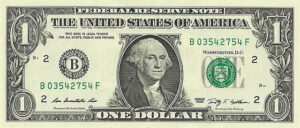
Euro (€) – The Euro is the official currency of many European Union countries, and its symbol is a stylized letter “E.”
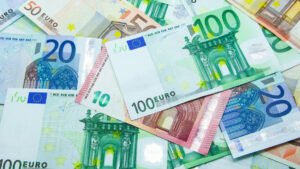
British Pound Sterling (£) – The British pound sterling is the official currency of the United Kingdom, and its symbol is represented by an “L” with a horizontal line through it.
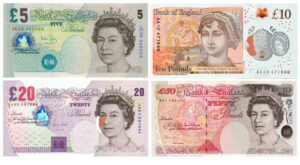
Japanese Yen (¥) – The Japanese Yen is the official currency of Japan, and its symbol is a capital “Y” with two horizontal lines through it.
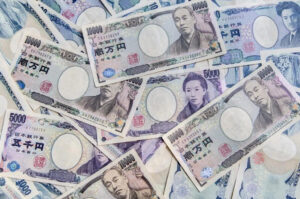
Swiss Franc (CHF) – The Swiss franc is the official currency of Switzerland, and its symbol is “CHF,” representing Switzerland’s official languages of German, French, and Italian.
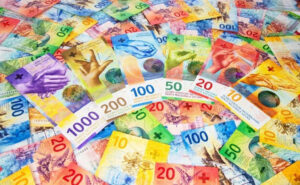
Canadian Dollar (C$) – The Canadian dollar is the official currency of Canada, and its symbol is represented by a capital “C” or sometimes “Can$.”
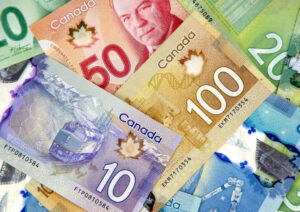
Indian Rupee (₹) – The Indian rupee is the official currency of India, and its symbol is a blend of the Devanagari “Ra” and the Roman “R.”
These are just a few examples of currency symbols used around the world. Each symbol represents the identity, value, and sovereignty of the particular currency.
Also Read Related Articles
Key Takeaways from Currency Symbol of India
● A currency comes from the Latin word “currere,” which means “to run” or “to flow.”
● The Indian Rupee sign was adopted by the Government of India on 15th July, 2010.
● The currency difference between Pakistan and India is that Pakistan uses Pakistani rupee (PKR) as its national currency, while India uses Indian rupee (INR) as its national currency. As of September 2021, one Pakistani rupee is equivalent to 0.47 Indian rupees. In other words, the Indian rupee is stronger than the Pakistani rupee.
● The notes of India are:
1. Rs. 100 (blue colour)
2. Rs. 200 (orange colour)
3. Rs. 500 (purple colour)
4. Rs. 2000 (pink colour)
5. Rs. 50 (fluorescent blue colour)
6. Rs. 10 (chocolate brown colour)
7. Rs. 20 (green colour)
All of these notes bear the portrait of Mahatma Gandhi, the father of the nation, on the front side. The back side of each note features different designs and images, highlighting India’s cultural and historic landmarks and achievements.
● The 17 languages in Indian currency note are Assamese, Bengali, Gujarati, Kannada, Kashmiri, Konkani, Malayalam, Marathi, Nepali, Odia, Punjabi, Sanskrit, Tamil, Telugu, and Urdu. The Reserve Bank has the sole authority to issue banknotes in India.
Currency Symbol Of India – Frequently Asked Questions (FAQs)
What is the Indian currency called and what is its symbol?
The Indian currency is called the Indian Rupee (INR). One Rupee consists of 100 Paise. The symbol of the Indian Rupee is ₹.
How do you write currency in India?
The rupee symbol generally comes before the number, and there's no space in between. So when you're writing a sum of money such as 100 rupees, you'd write it like this: ₹100.
Who made the rupee symbol?
Udaya Kumar Dharmalingam is an Indian academic and designer noted for his design of the Indian rupee sign.
Why was the Indian rupee symbol created?
The Indian rupee symbol was created to distinguish the Indian rupee from other currencies and to provide a unique identity to the currency.
Is the Indian rupee symbol used internationally?
No, the Indian rupee symbol is not widely used internationally as it is not yet recognized by the International Organization for Standardization (ISO).







